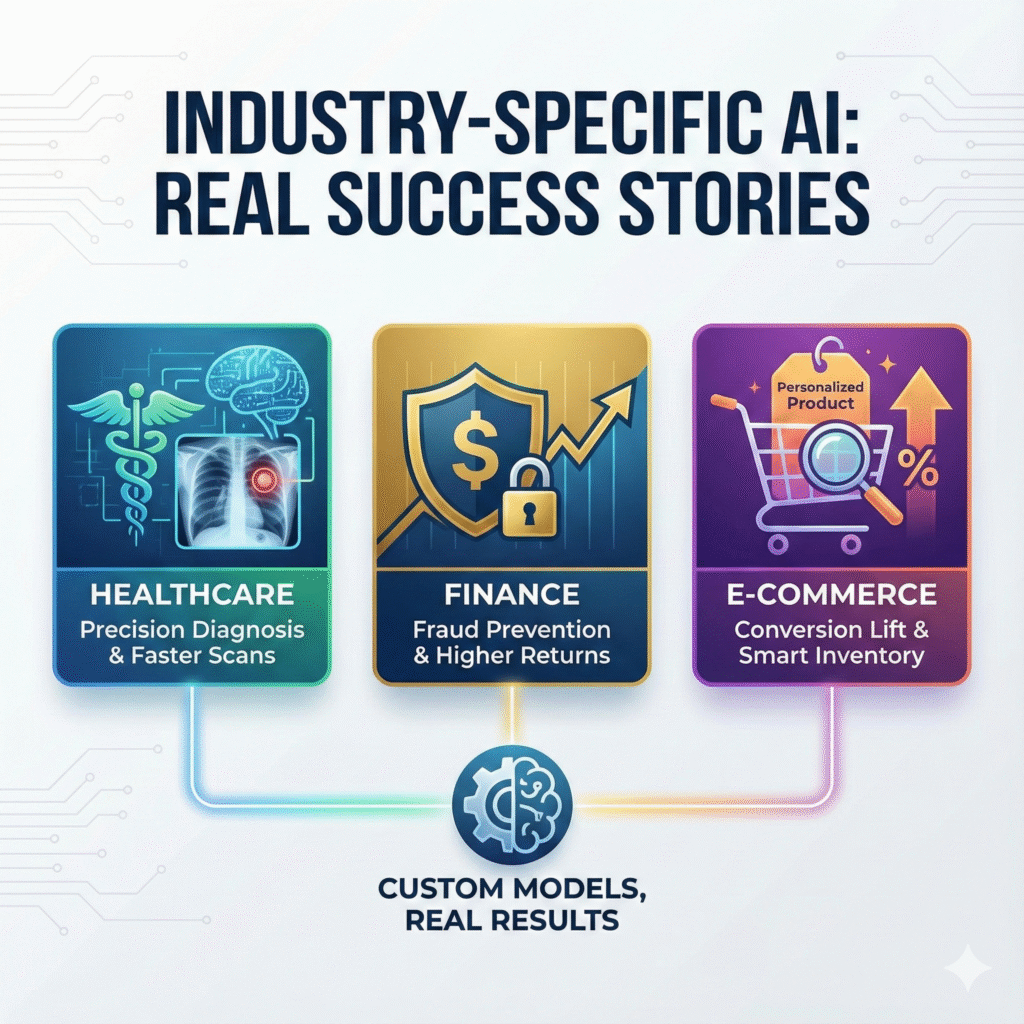Custom AI Implementation: Unlock Massive ROI, Fast Results & Smart Costs
You have seen the headlines: “Company X boosts revenue 40% with AI.” (Custom AI implementation)Then you try a plug-and-play tool and wonder why your results look nothing like that. Here is the secret nobody advertises: the biggest wins almost always come from custom AI built for one company’s exact reality—not a tool designed for everyone. But custom AI sounds scary—mysterious timelines, runaway budgets, vague promises.It does not have to be. Let us pull back the curtain on what a real custom AI project looks like in 2025: how long it takes, what it really costs, and the payoffs that make it worth every dollar. The Usual Roadmap (And Why It Works) Most projects follow the same battle-tested phases. Timelines flex with complexity, but here is what experience shows. Discovery & Planning – 2–4 weeksYou nail down the exact problem worth solving, map your data, and define success in cold, hard KPIs. Skip this and everything else suffers. Data Prep – 4–8 weeksThe unglamorous truth: 80% of the time goes here. Cleaning messy spreadsheets, merging silos, building pipelines. Do it right once and every future model thanks you. Model Building & Tuning – 4–6 weeksAlgorithms get selected, trained, poked, and prodded until they perform on your data—not some public benchmark. Deployment – 2–4 weeksThe model slides into your CRM, ERP, or app like it was always meant to be there. Real-time scoring, dashboards, alerts—whatever your teams use. Ongoing Care – Forever (but light)Monitor for drift, retrain quarterly, tweak as markets shift. Think oil changes, not engine rebuilds. Total time for a solid, production-ready system: 3–5 months.Not years. Months. The Money Talk—No Sugarcoating Costs scale with ambition, but here is what companies pay. Simple pilot (one focused use case like churn alerts): $30k–$70kMid-tier production system (think smart recommendations or fraud flags): $70k–$150kEnterprise beast (real-time, multi-department, massive data): $150k and up Compare that to renting a generic tool: $10k–$50k per year… forever.Plus the hidden tax of “good enough” results that quietly bleed margin. Most clients recover the entire investment in 6–12 months through efficiency gains or revenue lifts alone. What You Actually Get Back A logistics firm we worked with built a route optimizer on their own chaotic delivery data.Eight months later: 22% less fuel burned, deliveries arriving early, drivers happier, customers loyal.The system paid for itself twice over in year one. Across hundreds of projects, patterns emerge: Accuracy that generic tools dream about—because the model speaks your dialect of data.30–50% fewer hours wasted on manual grunt work.10–30% revenue bumps from sharper pricing, better upsells, lower churn.A proprietary asset nobody can copy, improving every quarter instead of waiting for a vendor’s roadmap. The Make-or-Break Ingredients Clear goal from day one (no “let us AI all the things”).Data that is accessible and reasonably clean (perfect is a myth).Leadership that treats this like a product launch, not an IT side quest.A partner who has shipped dozens of these, not their first rodeo. The Real Talk Custom AI is not the fastest way to check the “we do AI” box.It is the fastest way to get results your competitors cannot duplicate. In 2025, the leaders are not the companies throwing money at trendy tools.They are the ones quietly building intelligence that fits their business like a tailored suit.
Custom AI Implementation: Unlock Massive ROI, Fast Results & Smart Costs Read More »




